32nd Articulation and Staccato Exercises for Clarinetists
by Paula Corley
Date Posted: August 30, 2022
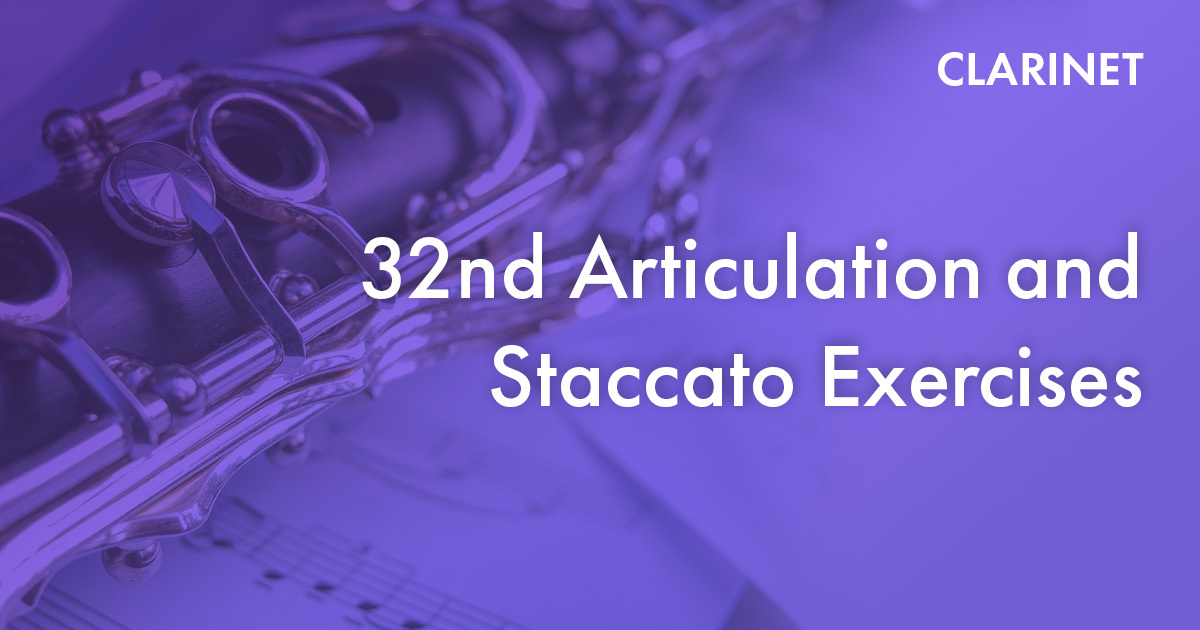
Minimal tongue motion is central to a good articulated clarinet sound. How can you minimize tongue motion? Focus on the sound you are making. Repeated single note patterns are a great tool because they allow us to focus on the sound and feel of articulation, without other complications. Articulating 32nd notes necessitates that the tongue stays close to the reed naturally because of the note speed.
In the examples below, it would be very difficult to maintain the tempo of the etude without minimizing the motion of the tongue. (Andantino = 78-83 BPM).
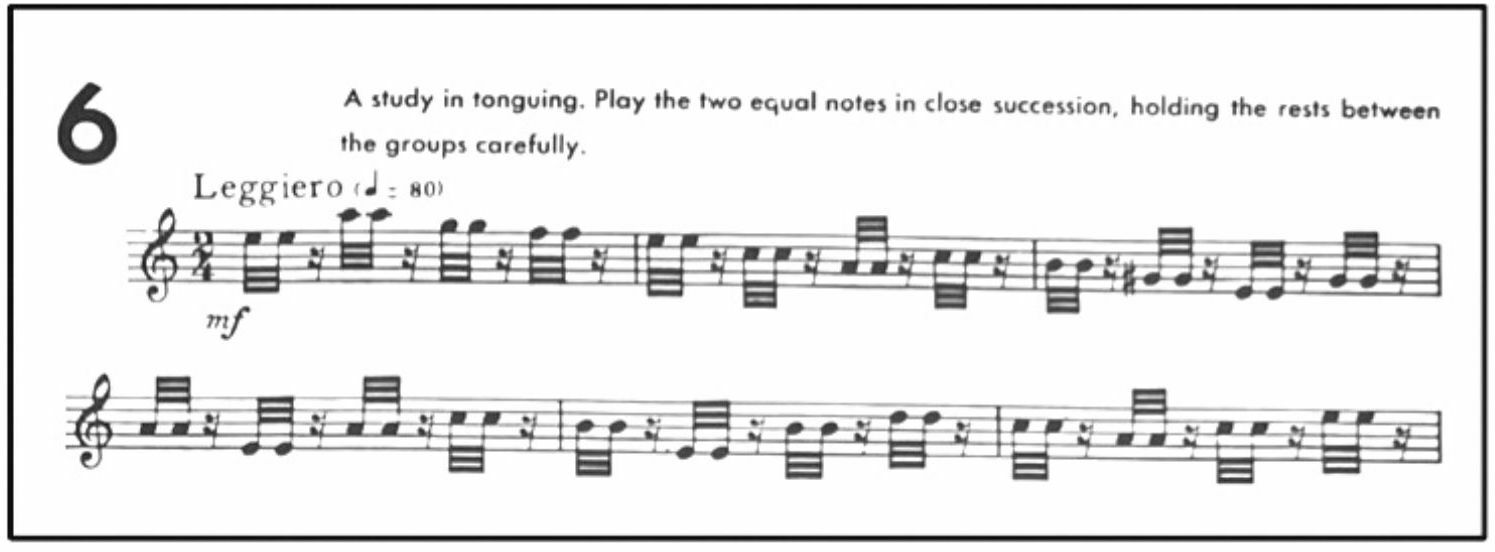
Victor Polatschek
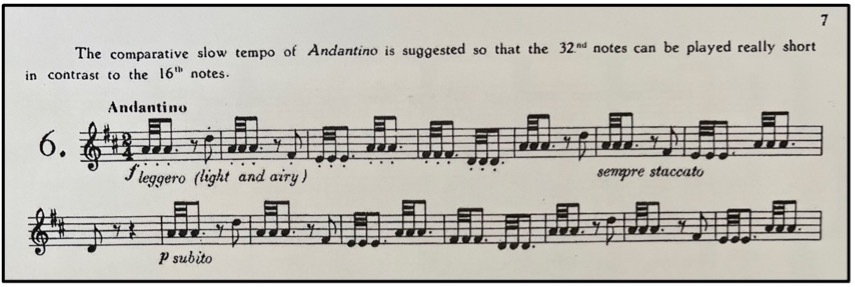
Reginald Kell
Here are some simple ways to incorporate 32nd notes into your daily practice.
Twos
- Memorize the basic rhythm below so that you can focus on the sound and feel of articulation.
- Start with a few notes at a tempo that feels easy to play.
- T and D – singularly or in combination - are good articulation consonants to start with. Both consonants happen near the tip of the tongue.
- “E” is an excellent vowel for producing good clarinet tone because it places the tongue in a high position inside the mouth.
- Consonants and vowels may need to be changed to better match different languages.
Basic Rhythm #1

Next, apply this basic rhythm to scales that you already know. Here is an example:
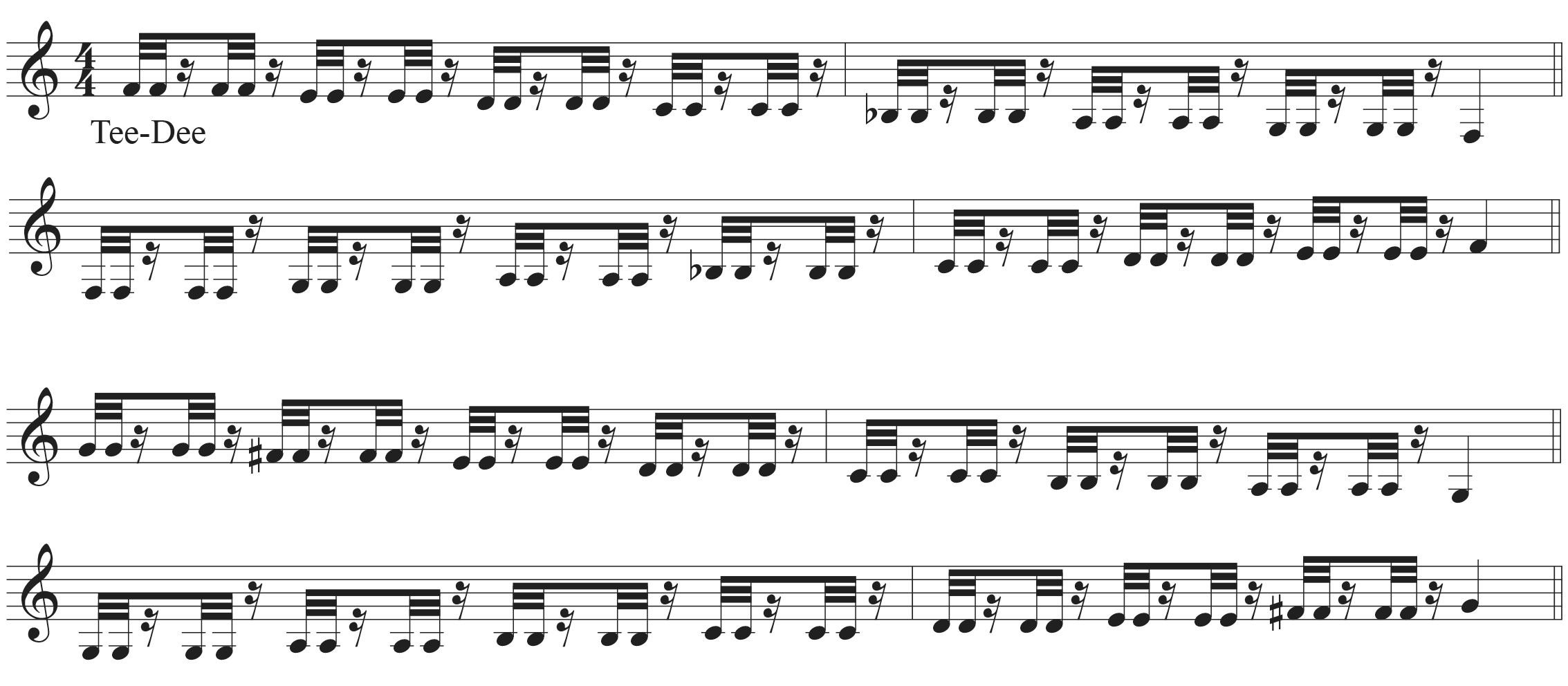
Twos and Fours
- Practice transitioning between 32nds and 16ths to make sure the motion of the tongue remains minimal in slower rhythmical groupings.
- Be careful not to rush the 16th notes.
- Practice at your natural tempo without the metronome first. Then use the metronome.
- Keep a tempo log at each practice session to track consistency and improvement.
Basic Rhythm #2

Basic Rhythm #2 applied to scales:
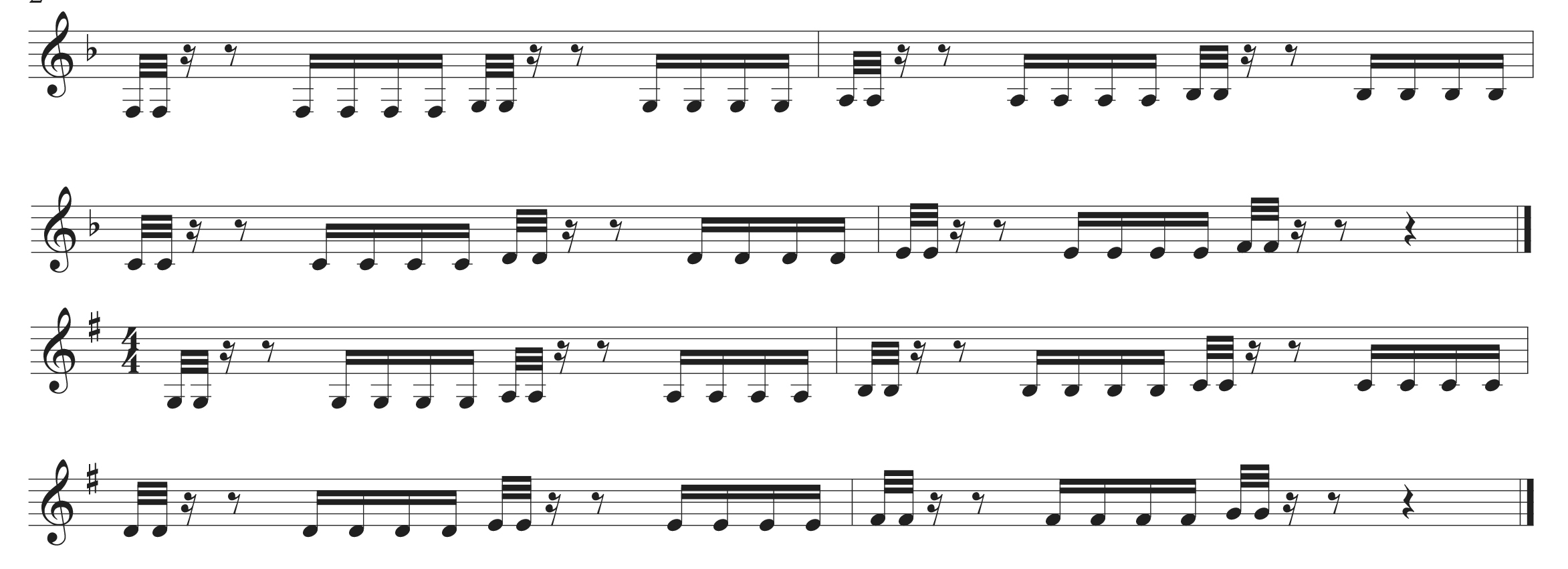

Tongue-stopped staccato
A tongue-stopped staccato is a very useful tool for clarinetists. Once you have mastered light and clean articulated 32nd notes, you can add this skill.
Some teachers are reluctant to introduce tongue-stop staccato for fear of creating a harsh articulated sound. If done improperly, harsh articulated sound is a probable outcome. However, if done carefully, a tongue-stopped staccato should not interfere with good articulated sound.
To create a tongue-stop staccato, the tongue must go back onto the reed to “stop” the note. Return to the first exercise (Twos) and apply the syllables DI-DIT (short i’s like “ribbit”) to the entire exercise. Be sure that you can feel the tongue on the reed when you finish the second note of the group - DIT. Leaving the tongue on the reed stops the vibration and creates a short staccato note ending.
Tongue-stopped staccato should not be used for all staccato articulation, only for appropriate styles and passages.

It's very important to keep the airstream constant, just as you do for slurred notes. The tongue interrupts the air by preventing the reed from vibrating. To visualize this, imagine holding a water hose running at full force (air moving through the clarinet) and using your thumb to stop the water from escaping the hose.
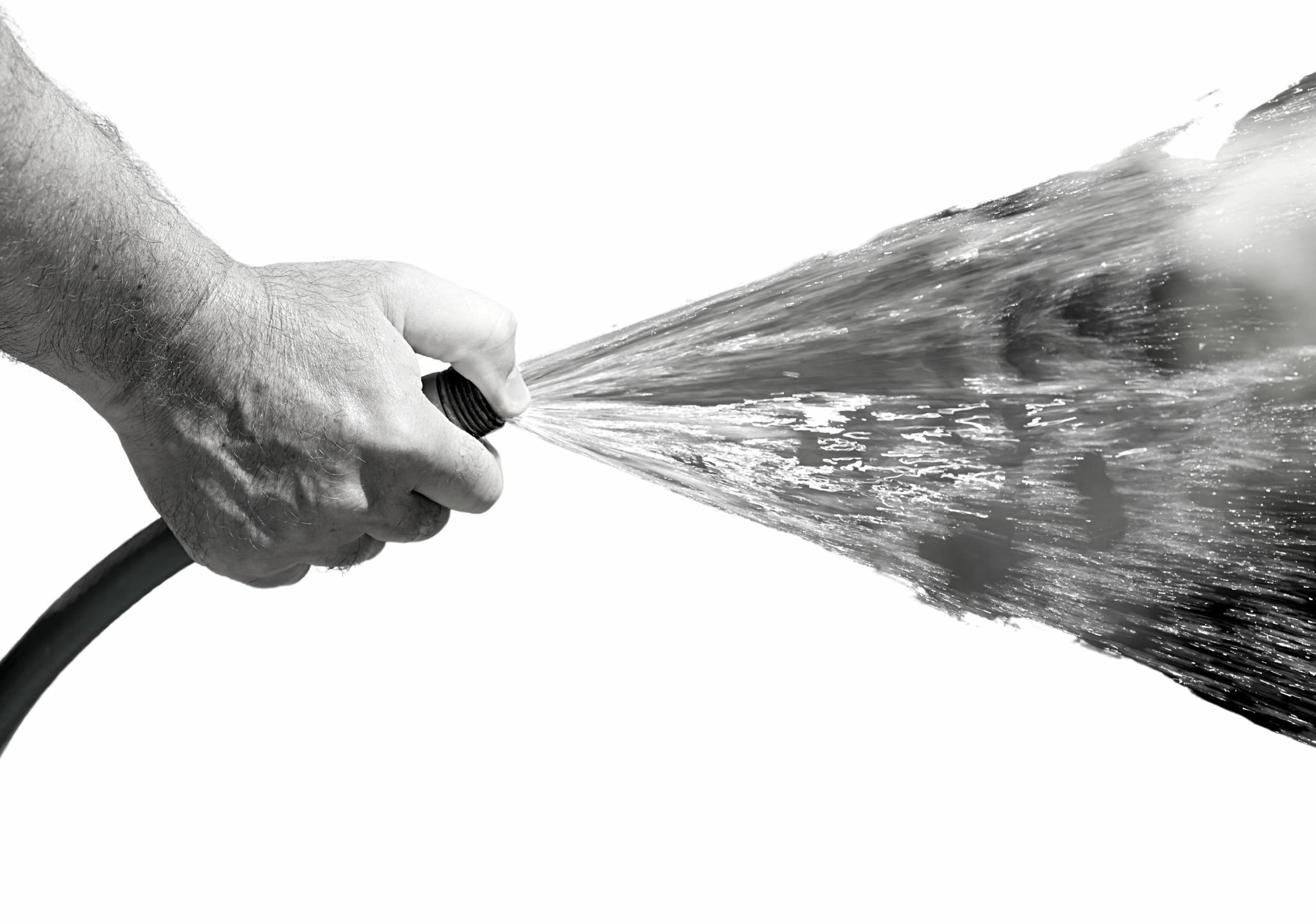
When using tongue-stopped staccato articulation, it’s helpful to move the fingers slightly ahead of the next note.
Here is a pattern for incorporating tongue-stopped staccato with fingers moving slightly ahead. Apply to all other scales.

For additional information about articulation, please visit my YouTube Channel @Paula Corley – Clarinet City.

About Paula Corley
Paula Corley is the Education Advisor for Buffet Crampon North America. She has 33+ years of teaching experience from middle school to university level. Most recently Paula served as the clarinet instructor at Texas Lutheran University where she hosted ‘clariNETWORKS’ – a very popular annual event for clarinetists of all ages and band directors. She is also a chamber music judge for Music for All's National Chamber Music Festival and served as the Pedagogy Chair for the International Clarinet Association from 2018-2020. Most know her as the ‘mayor’ of Clarinet City, a teaching website for all ages and stages of clarinet playing.
Originally from Mississippi, Paula grew up without access to clarinet lessons which sparked a lifelong interest in research for developing players. She is a graduate of Mississippi State University (BME) where she was named Alumnus of the Year in 2012-13 and Southern Methodist University (MM) where she worked with the legendary Howard Dunn. Paula taught in Plano, Texas ISD for many years before moving to Asheville, NC where she served as principal clarinet in the Asheville Lyric Opera and on the faculty at Mars Hill University (NC). Author of So You Want to Play the Clarinet and The Break (Southern/Hal Leonard), Paula has performed and presented at music conferences throughout the US since 1998. She is a performing artist and clinician for Vandoren and for Buffet Crampon and her articles have appeared in THE CLARINET, Vandoren WAVE, The Texas Bandmasters Review, and The Instrumentalist. A new series of her arrangements for clarinet can be found at Hal Leonard. (See the Homepage for links.). She also has two recorded works for clarinet: Unfamiliar Territory by Michael Markowski and Road Trip for clarinet quintet by Clifton Jones.